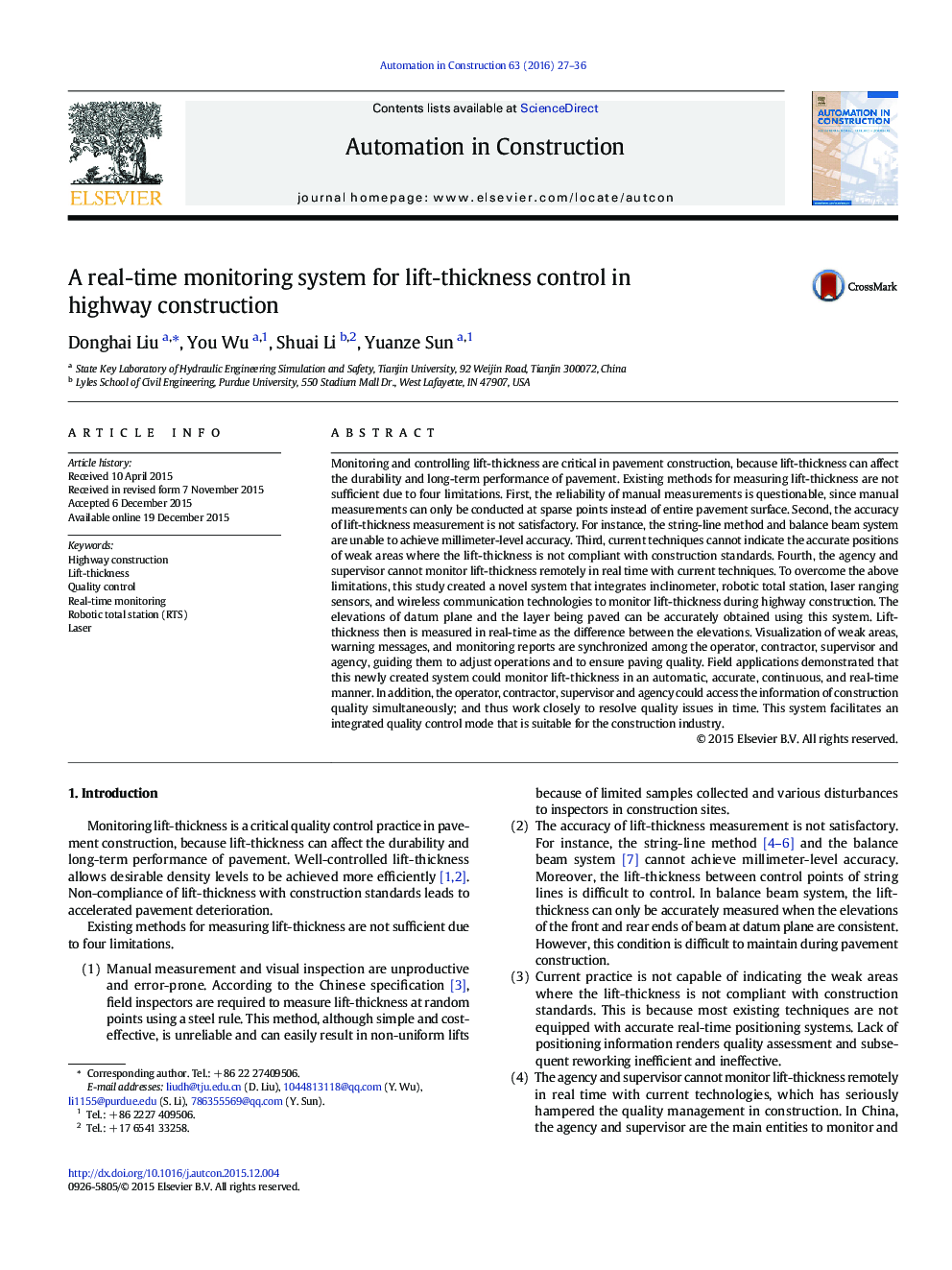| Article ID | Journal | Published Year | Pages | File Type |
|---|---|---|---|---|
| 246287 | Automation in Construction | 2016 | 10 Pages |
•An automated and accurate real-time system for lift-thickness monitoring•Multiple sensors including robotic total station, LiDAR, and inclinometer are used.•Feedback control mechanism based on visualization of non-compliant areas•Field validation demonstrated the efficacy and high accuracy of this system.
Monitoring and controlling lift-thickness are critical in pavement construction, because lift-thickness can affect the durability and long-term performance of pavement. Existing methods for measuring lift-thickness are not sufficient due to four limitations. First, the reliability of manual measurements is questionable, since manual measurements can only be conducted at sparse points instead of entire pavement surface. Second, the accuracy of lift-thickness measurement is not satisfactory. For instance, the string-line method and balance beam system are unable to achieve millimeter-level accuracy. Third, current techniques cannot indicate the accurate positions of weak areas where the lift-thickness is not compliant with construction standards. Fourth, the agency and supervisor cannot monitor lift-thickness remotely in real time with current techniques. To overcome the above limitations, this study created a novel system that integrates inclinometer, robotic total station, laser ranging sensors, and wireless communication technologies to monitor lift-thickness during highway construction. The elevations of datum plane and the layer being paved can be accurately obtained using this system. Lift-thickness then is measured in real-time as the difference between the elevations. Visualization of weak areas, warning messages, and monitoring reports are synchronized among the operator, contractor, supervisor and agency, guiding them to adjust operations and to ensure paving quality. Field applications demonstrated that this newly created system could monitor lift-thickness in an automatic, accurate, continuous, and real-time manner. In addition, the operator, contractor, supervisor and agency could access the information of construction quality simultaneously; and thus work closely to resolve quality issues in time. This system facilitates an integrated quality control mode that is suitable for the construction industry.
